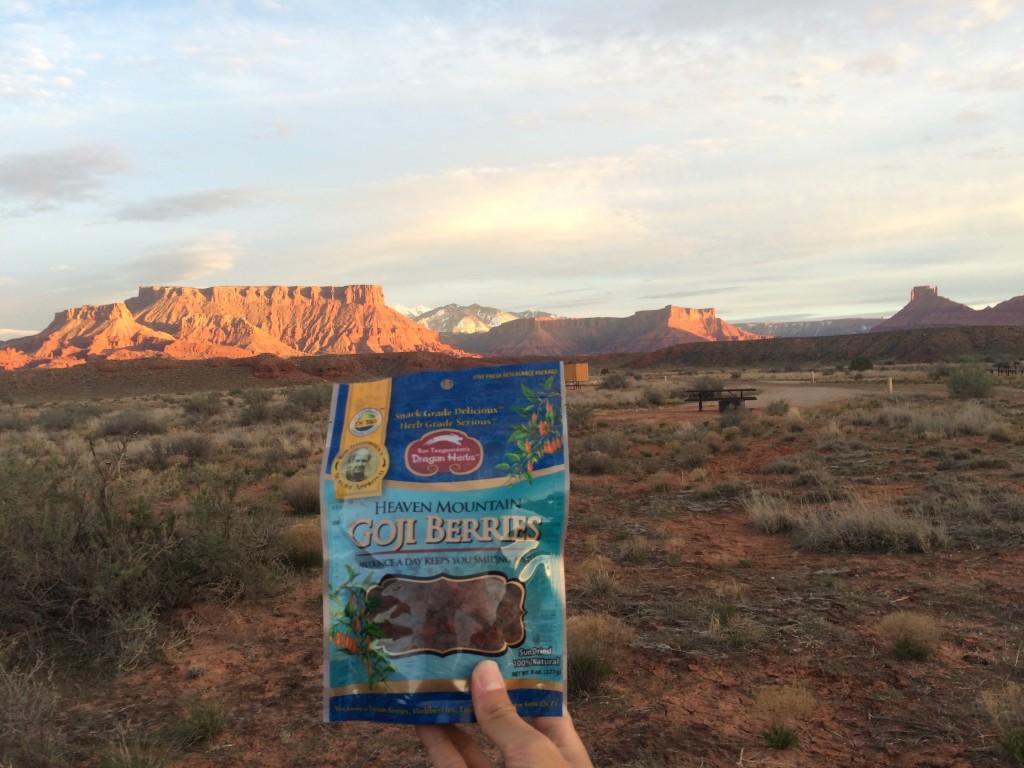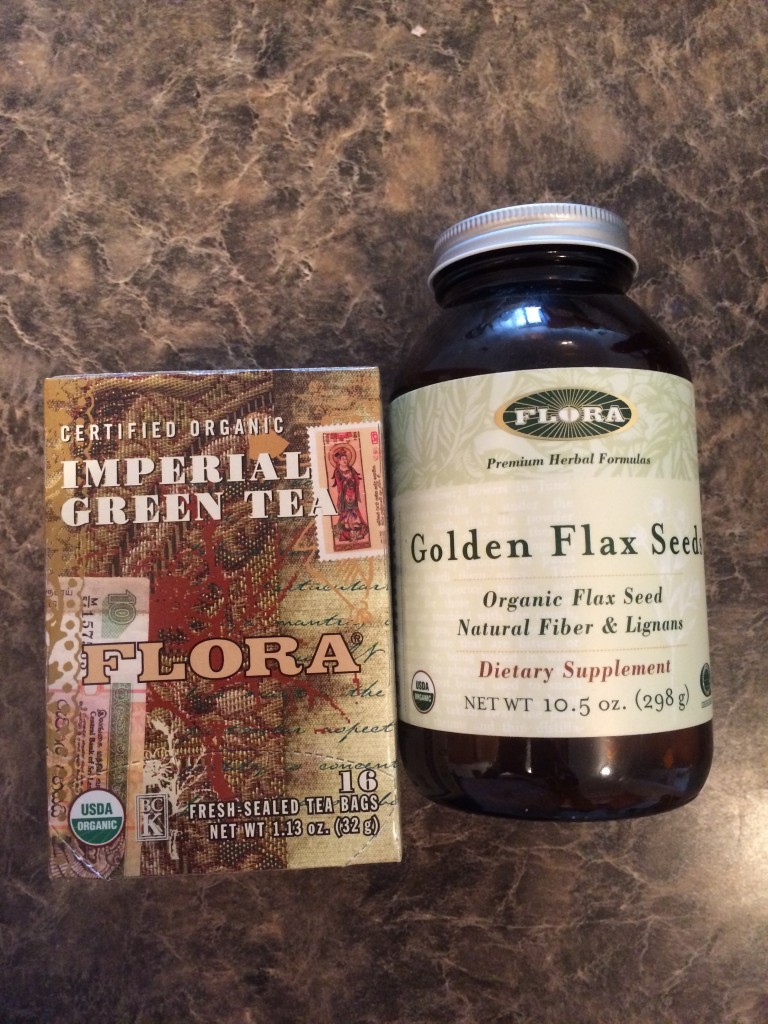Nutrition For Distance Running: An Experiment of Many…
Disclaimer: I’m not a Doctor (obviously). I’m not an RD either! I simply have a passion for nutrition, the environment and distance running. I took a handful of Nutrition/Chem/Bio courses during my time at Cornell University but most of what I learned is from lay study. Take my advice with a grain of salt (pun intended) – and please consult your doctor before taking any supplements or changing your diet/lifestyle. I’m not liable for any health issues or death you may or may not encounter!
The whole “experiment of one” phrase is used a lot in diet debates. While I agree that our individual differences make us unique, I also believe that we all have a lot more in common than many think (and this includes what may be good for us to eat!). But honestly, like a study with a large sample size, I think most “diets” and nutritional choices actually are an “experiment of many.” There is a plant-based/vegan movement, there are crowds of Paleo diet eaters, Atkins and gluten-free groups, and there are all combinations in-between.
Like with distance running training, individualization and customization is ideal for “fine tuning the athletic machine.” We are all-different and respond slightly different to various stimuli. However, there are basic key principles/fundamentals in distance running training theory that we all benefit from (i.e. building an aerobic base with higher mileage moderate intensity running, periodization, specific long runs and speed workouts). This is much like diet I think! There are general principles and things that most of us may (or should) all have in common.
What are some of those things?
Well for starters you probably all know by now that I have a heavy bias for whole food plant based eating. I’m not going to make this diet debate about trying to convert you to veganism though! Instead I want to point out (what I see) as elements to a healthy lifestyle and I feel have helped me in the past:
- Eat more fruits and veggies (duh). Just like your mom told you! I believe this is somewhat common sense, but for some reason people seem to think whole fruit is bad for you. Yeah, it’s a lot of carbs but veggies and fruit are chock full of essential vitamins or nutrients…and the fiber fills you up. I don’t think any established diet can argue that eating more fruits and veggies is bad for you. Eat a rainbow of colors…never worry about constipation again.
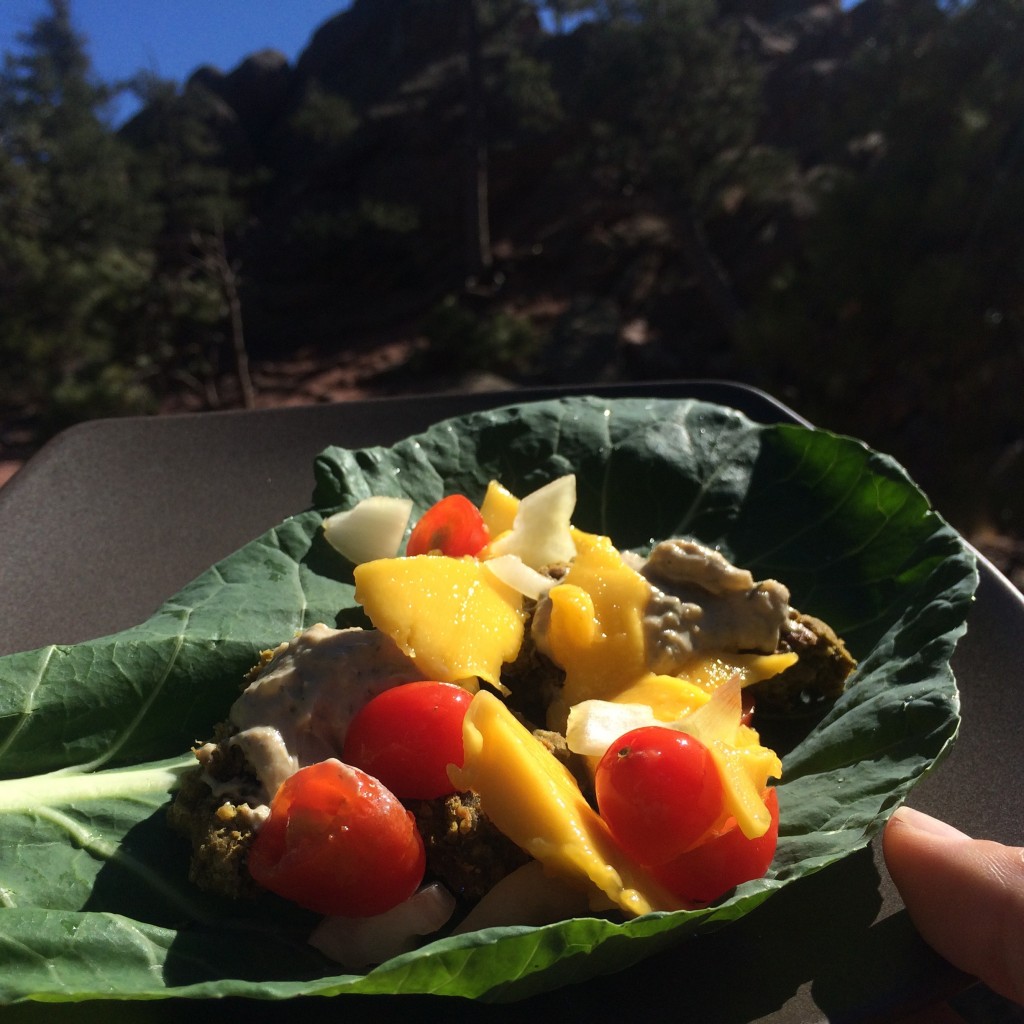
Mango with cherry tomatoes and a Tahini-dill sauce with homemade falafels on a collard green leaf/wrap
- Highly processed food, food with artificial colors and food with preservatives isn’t that good for you! A lot of packaged/pre-made stuff has hidden amounts of chemicals not found in nature. Probably best to avoid these as many also are chock full of extra sugar and sodium and fat that your body simply doesn’t need. “Empty calories” so to speak. Every probably knows this…but they are so addictive and there are so many products out there!
- It really is all about balance and moderation (but that doesn’t mean eat what you crave!). I’ve had blood panels done as a runner to check to make sure my iron levels, B12 levels, magnesium levels and vitamin D levels are in check. It is easy to get biased with yourself and think you are getting a “well rounded diet” when in fact you may be lacking. If people just ate on raw emotion and “instinct” (probably too often the case in the US) every meal may very well be from McDonalds or contain donuts!
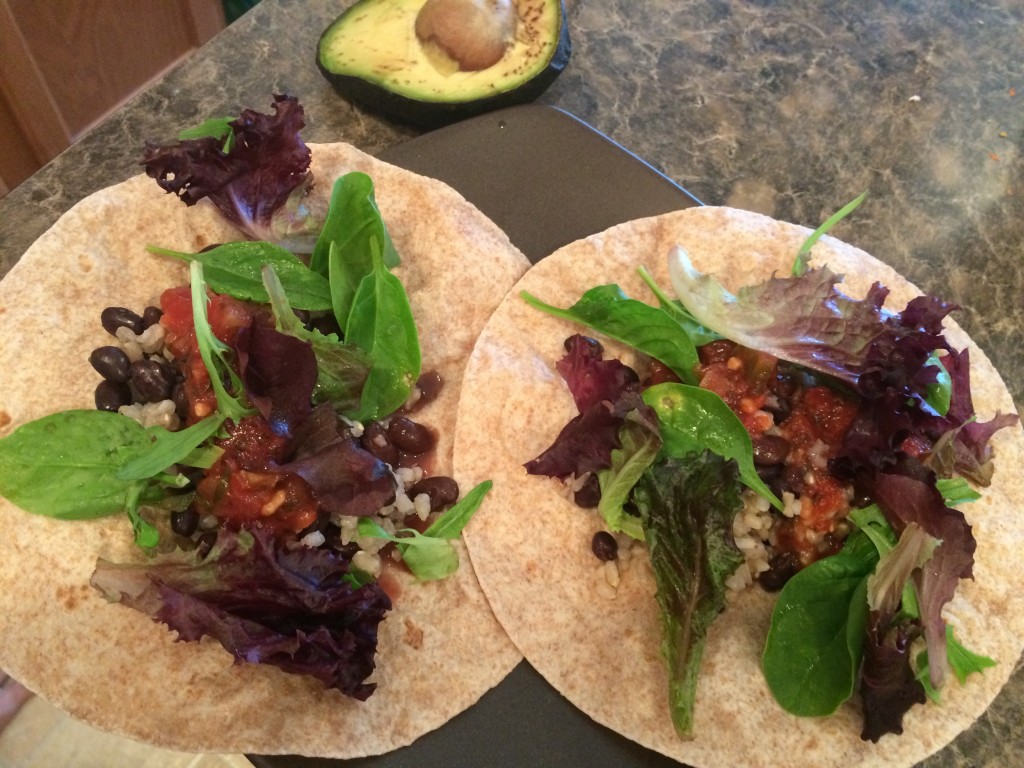
Typical lunch = rice/beans with salsa, salad/greens, avocado and wheat/flour tortillas. You can say the tortillas are processed, but I’m not that picky! They are natural, organic, and locally made.
In closing, people seem to generalize with macronutrient ratios as the “end all” to describing a diet (i.e. the “standard American diet or ‘SAD’ is 30% fat, and the low fat plant based diet can be 15% fat, 15% protein, 70% carbs, whereas Paleo and ‘low carb’ may be 40% fat, 30% protein and only 30% carbs). I believe that’s a major disservice and oversimplification to nutrition as obviously the details of nutrient/exercise timing as well as the mix/interaction of all nutrients can drastically change what happens in the body. Lots of variables at play there and any study that isolates single nutrients is playing a dangerous game of being inherently flawed to some degree.
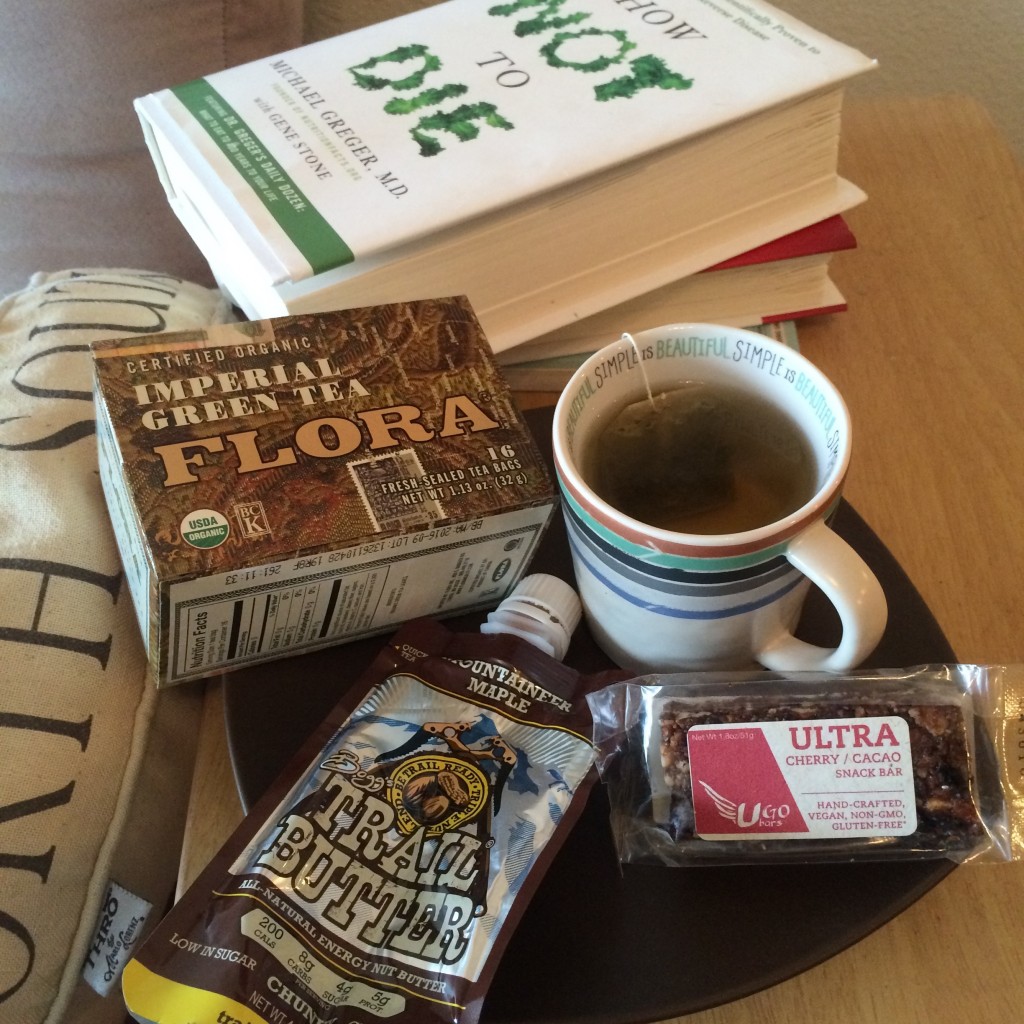
Typical “Afternoon Tea Time Snack” with UgoBars and Trail Butter.…I like something sweet with my tea/coffee
Personally I’ve found that a lot of antioxidants (from things like Flora Healthy Green TEA as well as Goji Berries!) and a nice source of Omega-3s and fiber (from Flora Healthy flaxseeds) are part of what keeps me healthy as an endurance athlete. While this is an obvious sponsor/product plug, I truly believe that a lot of people seem to need more of both antioxidants and fiber in their diet as well.
I think we can learn a lot from “Blue Zones”…cultures of people that have thrived with certain types of diets for long periods of time. Unlike in many first world countries like the US, these people do not suffer from high rates of coronary heart disease, cancers, diabetes, strokes and obesity as much. Why certain “diet cults” don’t focus on these Blue Zones and what they have to offer is beyond me.
This is why I believe it’s a “study of many.” We’re all in this together as a human species. The human body is amazing at being able to adapt to eating a very wide variety of foods (we could probably survive on plastic for a while….some highly processed food basically has plastic in it nowadays anyway!)…but some foods definitely are not optimal. Some foods likely lead to cancer, diabetes, obesity and heart disease. Some foods/food sources are much more energy costing and destructive to the environment as well.
In the words of Michael Pollen: “Eat food. Not too much. Mostly Plants…”
-Coach Sage
Follow on Social media:
Snapchat: @SageCanaday
